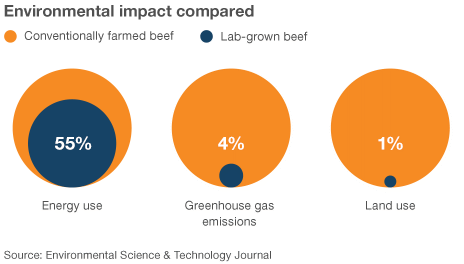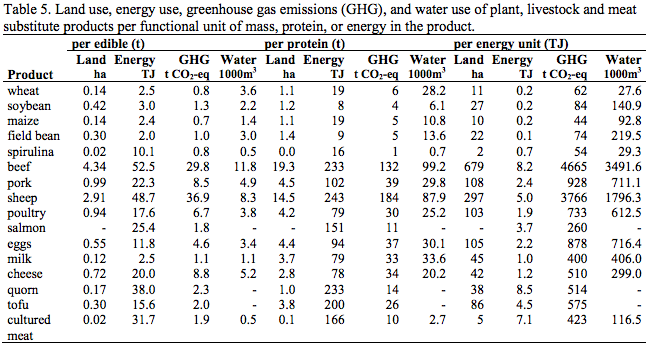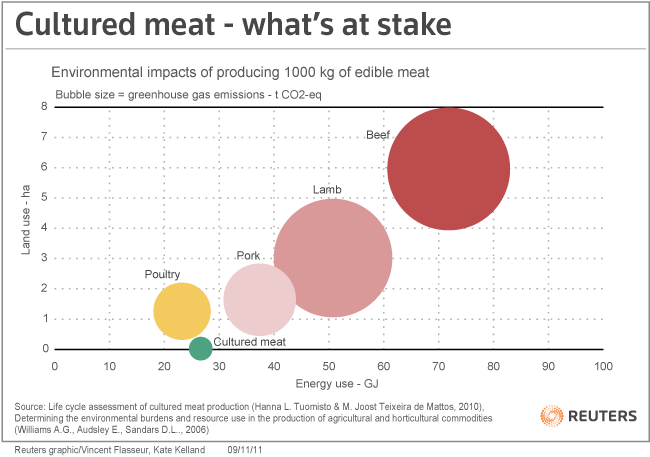2011: New Harvest-funded environmental analysis on cultured meat production is published
New Harvest put out a request-for-proposals to find a researcher who would be interested in investigating the environmental impacts of cultured meat. The research was to be peer-reviewed and New Harvest would simply fund the investigation.
Hanna Tuomisto at Oxford University had the best proposal, and was chosen to perform an environmental analysis, based on a review of current research, of the impact of cultured meat production as compared to conventional meat production. The authors explored the impacts that cultured meat would have on greenhouse gas emissions, land and water use, as well as opportunity costs of land use, should it completely replace conventional meat production in all 27 member states of the European Union.

The paper predicted that, based on current published figures and research, complete replacement of conventional meat with cultured meat would result in an incredible 78-98% reduction in greenhouse gas emissions, 99% reduction in land use and 82-96% reduction in water use,and 45% reduction in energy use.

In addition, the authors note that cultured meat could help reduce most environmental impacts of livestock production if the land released from livestock farming was used for providing environmental services. Cultured meat production could have potential benefits for wildlife conservation for two main reasons:
i. It reduces pressure for converting natural habitats to agricultural land
ii. It provides an alternative way of producing meat from endangered and rare species that are currently over hunted and over fished for food
However, they point out that it may also have some negative impacts on rural biodiversity due to the reduction in need for grasslands and pastures, depending upon how the land is used. In some hilly areas, livestock plays an important role in maintaining the open landscapes that are preferred over forested hills. The conversion of grasslands into forest, and arable-lands to producing energy crops for biofuel, for example, might benefit some species whilst others may suffer.
This key environmental assessment paper has since been cited a countless number of times in quantifying the potential environmental benefit of cultured meat, by both researchers and the media.
It has also received some criticism for inaccuracies. The main criticism is that since a cultured meat production industry doesn’t yet exist, the paper is basically “a fairly complex thought experiment.” It therefore is based on a number of assumptions, such as the use of Cyanobacteria hydrolysate (a bacterium cultivated in ponds) as the nutrient and energy source for muscle cell growth, when we have not yet proven that meat tissue can even be grown using this bacteria.

The authors do acknowledge that “as the technology for producing cultured meat in large-scale production plants is currently not well defined, there are many uncertainties about the data of the environmental impacts of cultured meat production presented in this paper.” However, Tuomisto has recently announced that she is working on updating the paper with better knowledge about advances in cultured meat technology to be more accurate. We’re looking forward to seeing the results!

